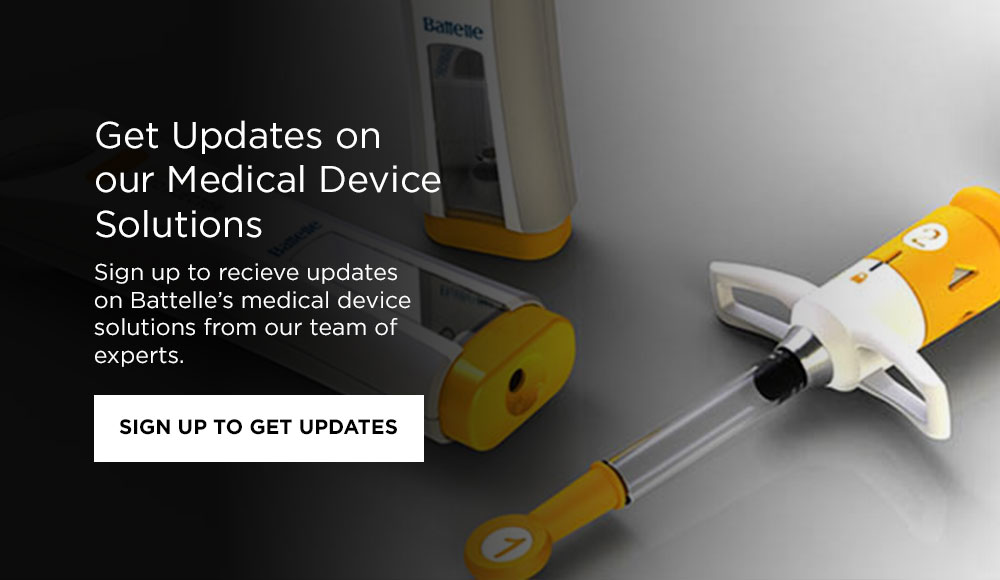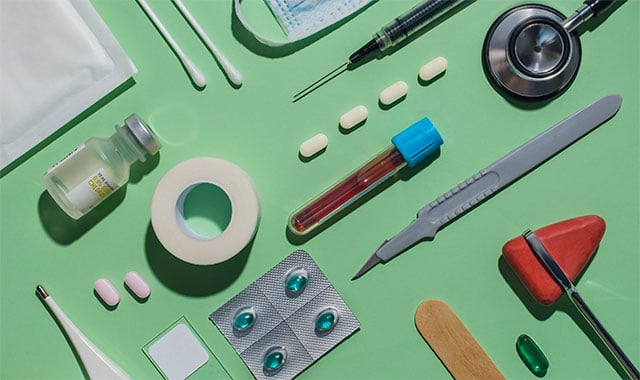Building Sustainability into Medical Devices

Sustainability in medical device design is an increasingly important consideration for manufacturers, decision makers and end users. And for good reason—sustainable medical devices are not only better for the environment and attractive to consumers, but they can also offer business benefits in terms of cost savings, investor attractiveness, and improved brand and competitive advantage. To reap these and other benefits, medical device manufacturers need to think about sustainability at the beginning of the design phase and consider the entire lifecycle of the device.
Medical Device Sustainability Across the Lifecycle
When considering medical device sustainability, often people think about the end of the lifecycle. Is the device recyclable? Is it reusable? What are the costs and environmental impacts associated with disposal? Medical device waste is a huge and growing problem in the United States and globally, especially as devices become more complex and incorporate more electronic components and mixed materials.
But managing waste streams is only one aspect of medical device sustainability. Environmental sustainability also includes opportunities to reduce carbon emissions, energy use, water use and material waste across the entire lifecycle of the device, from design and material selection, to supply chain management, to the production process, manufacturing, and distribution. Decisions made at each stage of the lifecycle impact the longterm sustainability of the device.
Building sustainable medical devices starts at the very beginning, at the design phase. This is where 80% of sustainability decisions are made. These early decisions will have the biggest impact on device sustainability. By taking a more holistic view of medical device sustainability, we can find the opportunities that make the biggest difference with the fewest tradeoffs.
Six Pathways to More Sustainable Medical Devices
Each medical device is unique, and there is no “one-size-fits-all” solution to improving sustainability. But there are some common elements that manufacturers can consider. Here are six potential pathways to improved device sustainability and questions for manufacturers to consider in the design phase.
- Materials selection:Can you swap out a petroleum-based plastic for a bio-based material? Or reduce the number of different materials used so that the device is easier to recycle at the end of the lifecycle? Or swap plastic for glass or stainless steel so it can be refurbished and reused?
- Device design: Can you reduce the overall dimensions or weight of the product to minimize materials use, packaging and distribution-related carbon emissions? Can you shrink electronic components to reduce their eventual disposal impact? Is there an opportunity to reduce the battery size or switch to a more sustainable battery technology (e.g., rechargeable batteries)?
- Manufacturing process: Are there manufacturing options that will reduce energy and water use? Could additive manufacturing be used to reduce material waste? Does your contract manufacturer follow environmental best practices for carbon capture and disposal of waste streams?
- Packaging: How can packaging waste be minimized? Can recyclable or compostable packaging materials be used? Can the use of plastic or petroleum-based foam packaging elements be eliminated?
- Distribution: Can manufacturing and warehousing locations be chosen to minimize long-distance transportation?
- Disposal:Is it possible to switch from a single-use device to a reusable device? Can the device or elements of the device be recycled? Could it be returned to the manufacturer to be refurbished?
These are not the only pathways to medical device sustainability, but they provide a starting point for medical device designers to consider. Battelle works with medical device manufacturers to address complex questions around sustainability options and their impact on device performance, cost, usability and manufacturability. We take a holistic approach to help manufacturers make effective decisions and find the fastest and least disruptive route to improved medical device sustainability.
Have questions about medical device sustainability? Contact our team at [email protected] to start a conversation.
Balancing Sustainability Decisions in Medical Device Design
Medical device product development requires balancing a lot of factors including safety, usability, reliability, and durability. Increasingly, manufacturers are adding medical device sustainability to the list of factors they need to consider. When making sustainability decisions, it is important to consider how those decisions will impact other design requirements and the overall performance, cost and manufacturability of the device.
Balancing Medical Device Sustainability with Other Requirements
Many manufacturers are rethinking how their medical devices are designed, manufactured, distributed and disposed of as they look for opportunities to reduce their carbon footprint and total environmental impact. There are many pathways to improved medical device sustainability, including materials selection, packaging, manufacturing processes and end-of-life disposal options. Each change may have unintended consequences for other aspects of the device. When introducing any change to a medical device, product engineers need to consider how the change will impact device performance, usability, safety and other requirements.
Even seemingly simple changes can introduce unexpected issues with device performance, safety or usability. For example, switching from a petroleum-based to a bio-based plastic housing may reduce overall greenhouse emissions for the device. However, if the new material has different physical properties (e.g., tensile strength, durability, aging), it could have an adverse effect on device performance or safety. Or consider a simple change in packaging. Moving to biodegradable packaging materials might be great for the environment, but if it results in a higher percentage of devices getting damaged in transport and potential consumer safety risks, the tradeoffs for the change are just too high.
Other proposed sustainability solutions may be much more complex. Consider the range of options for reducing medical device waste streams at the end of the lifecycle. Should you move from a single-use device to a reusable model? Or change materials to make the device easier to recycle? These decisions each have potential impacts on end users. If you are asking users to disassemble components in order to facilitate recycling, there may be safety implications, such as the potential to encounter used sharps or expose small batteries that pose a swallowing hazard for children. Reusable devices may create new user burdens around sanitation and storage.
In an effort to reduce medical device waste, some companies are considering options such as collecting used devices for disassembly and recycling or refurbishing and reuse. These programs pose their own challenges. Companies must consider the cost, environmental impact and safety of collecting used devices from their user population. They must also have human resources and infrastructure in place to manage collection, cleaning and disposal of devices. If devices are intended to be refurbished and resold, companies much make sure that the refurbished devices will meet FDA approval, be accepted by end users, and deliver the same performance, safety and reliability as new devices.
Finding the Low-Hanging Fruit for Medical Device Sustainability
IIt takes careful engineering and a broad perspective to make the right sustainability decisions for medical devices. Product designers and engineers must be able to foresee potential negative consequences and design around them. Consideration also needs to be given to FDA requirements for the device and whether the redesigned device would have to be resubmitted for regulatory approval. These complexities may make designing medical devices for sustainability seem like a daunting proposition.
Fortunately, we don’t have to make big, sweeping changes to a medical device to make a difference in its environmental impact. Making small changes anywhere along the lifecycle can add up to big impacts on carbon emissions, water use or energy use. By looking at the entire lifecycle of the device—including supply chains, device design, manufacturing processes, distribution and disposal—it is possible to find “low-hanging fruit” the delivers a large impact with relatively minor changes.
When making sustainability decisions, it helps to have a design partner with deep and broad expertise to help you understand and weigh various options and anticipate the potential consequences of a design decision. That’s exactly what we do at Battelle. Our team combines extensive experience in medical device design with specific expertise in advanced materials, optics, battery design, environmental science, human factors engineering and other disciplines pulled from across Battelle. That allows us to evaluate not only the mechanical impact of a design change but also other factors such as manufacturability, user experience or regulatory requirements. We can help manufacturers evaluate the potential benefits and tradeoffs of various pathways to sustainability and find the best way forward.
Are you weighing medical device sustainability options? Talk to an expert at Battelle to find the best path. Contact us at [email protected] to get started.

Related Blogs
BATTELLE UPDATES
Receive updates from Battelle for an all-access pass to the incredible work of Battelle researchers.








